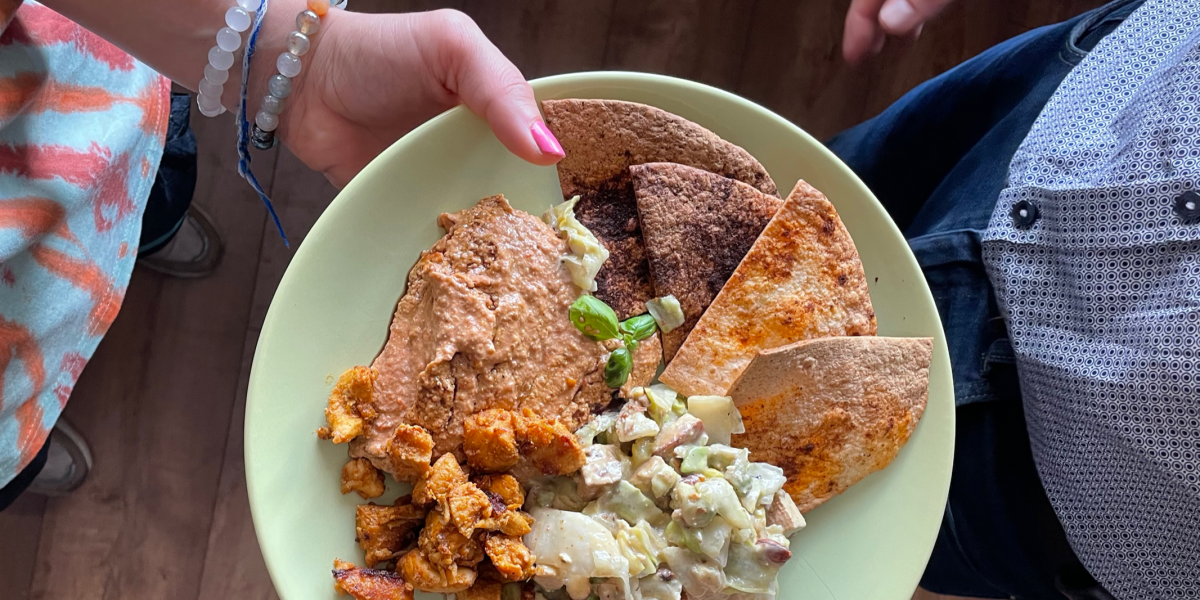
I first arrived at Integral Vision in the fall of 2021 to cook, preparing a vegan breakfast: turmeric tofu scramble with chickpea flatbread, made without a recipe, from memory, and intuitively. Somehow, I had to define what kind of chef I was, considering I didn’t follow the traditional kitchen rules, didn’t have any certification as a chef, and had no experience making a Crème brûlée or any meat dish, since I only prepare vegan and allergen-free food. I had never watched Gordon Ramsay videos for inspiration, and I had no idea that Ottolenghi was a famous chef, thinking instead that it was either a Moroccan town or a German opera singer. I defined what I did in the kitchen as intuitive cooking and referred to myself as an amateur vegan chef because, at first, I didn’t know that intuitive cooking was actually a recognized culinary trend. Then, I looked into this latest trend, and it turns out it follows the same principles that I had articulated about what I do in the kitchen and why I don’t follow traditional cooking methods. The principles of intuitive cooking are as follows: stop following traditional recipes conventionally, learn to trust your instincts and memory more, develop your creativity, experiment with ingredients, spices, and flavor combinations, improvise, and don’t approach cooking with the mindset of “everything must be measured,” but rather learn to cook based on experiential knowledge.
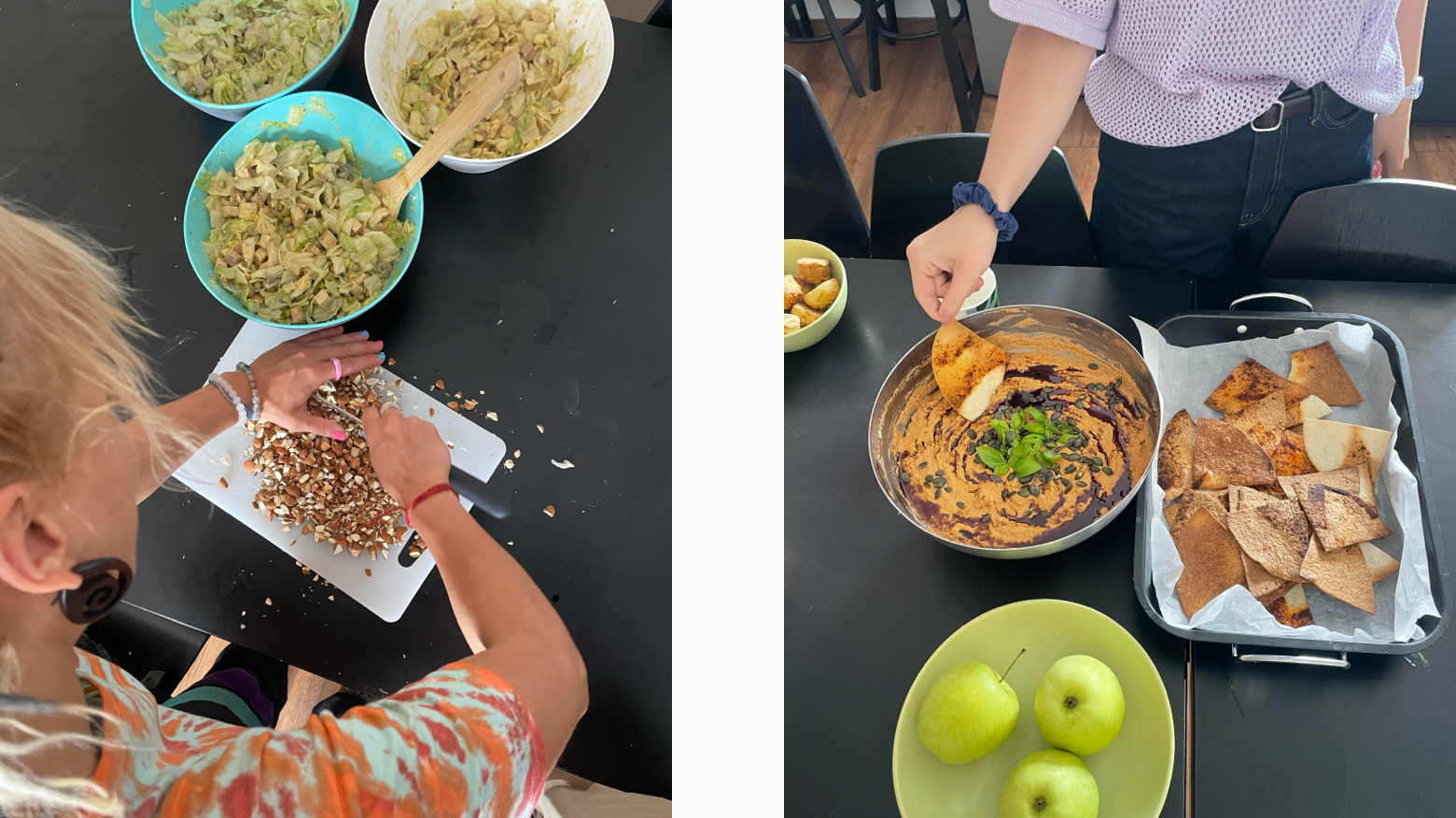
I already knew Kulcsi before I came to the company, so I felt somewhat familiar with the new environment, yet despite this, my usual social anxiety kicked in. I generally need more time to feel comfortable around people, which often makes me feel like others think I'm odd. However, at Integral Vision, I had a new experience where I was given the space to be present with my anxiety because introversion was treated as a value here. For me, this meant that I didn’t have to force myself into meaningless small talk, as there was room to connect with others in a way that felt authentic to me, in my own time. This led to conversations where small talk took on meaning or was re-framed, as we gradually found common ground with everyone. In these everyday interactions, the conversations deepened with sincere curiosity and attention toward each other. Additionally, there was room for not needing to chat with everyone. A small smile or a kind gesture was enough feedback to show that we could quietly coexist near each other, while at the same time, everyone was deeply immersed in their own work processes.
While I was working, unsurprisingly, I was in the kitchen the entire time, and when others entered this shared space, they typically came for a coffee or passed through the kitchen. So, while others were taking a break, I was in my own workflow, immersed in my process. This is why silence gained legitimacy for practical reasons — as we were engaged in different activities — yet there were times when encounters in the kitchen evolved into a shared work process because a good conversation started, which spontaneously transformed into a joint cooking session.
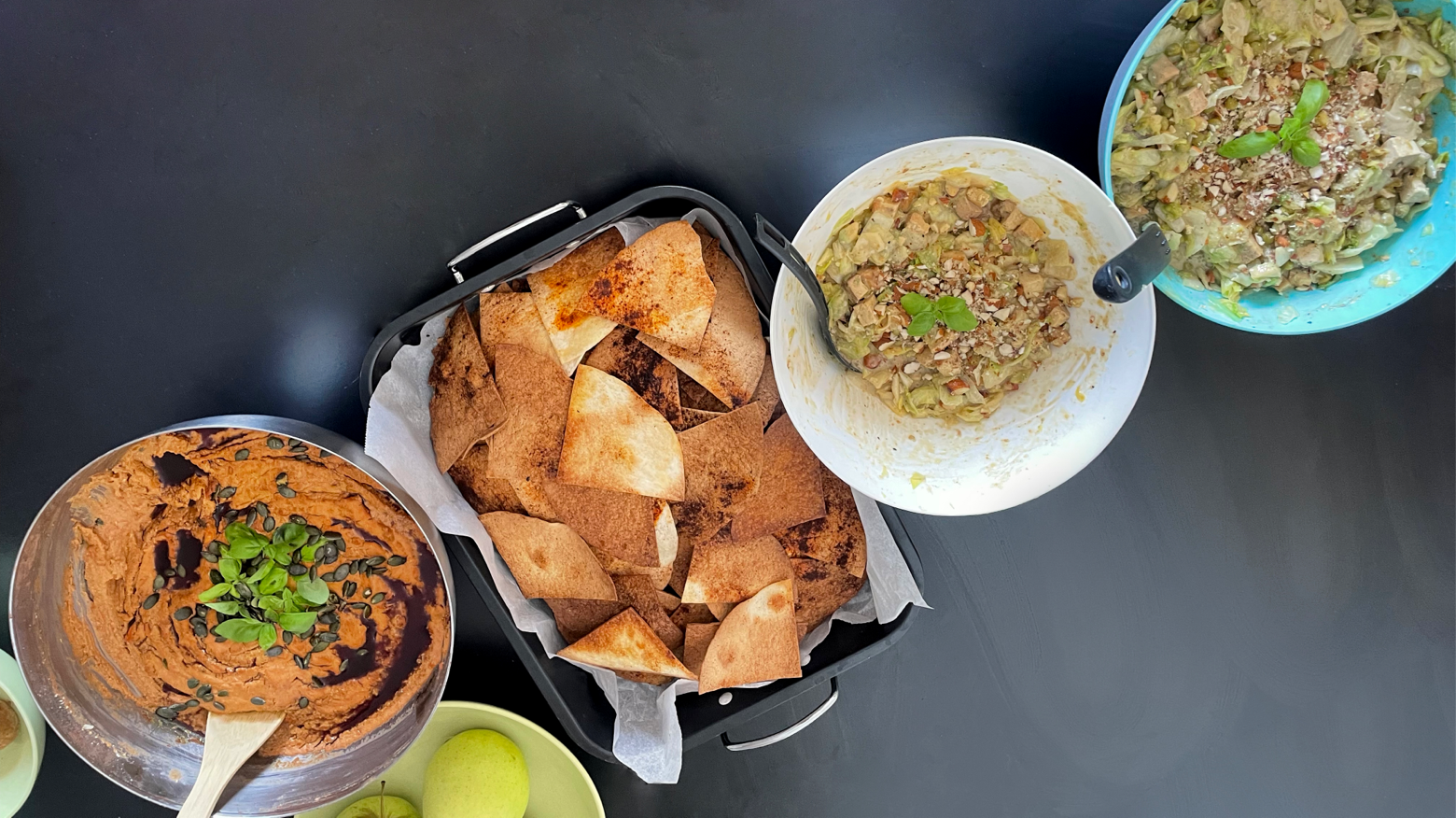
At the company, I was given the opportunity and space to experiment with intuitive cooking. This process inherently involves the possibility of making mistakes, as I combine new flavors, try dishes from different cultures, and blend them based on my senses. Mistakes, which are typically seen as negative by the majority social norm, receive a new framing in the practice of intuitive cooking. In this approach, gaining experience and acquiring knowledge cannot happen without mistakes. As a result, errors become a value and an integral part of the learning process in intuitive cooking.
The menus were always planned in advance, and the company employees could vote on them the day before. However, I didn't try every dish beforehand, so I often prepared the selected menu on the spot, “live.” I combined vegan recipes from Instagram chefs and bloggers with my own ideas to create the dishes.
My experiences were greatly shaped by my mother’s veganism, as she had been following a vegan lifestyle since the 1990s. At that time, living a vegan lifestyle in Hungary was not easy, especially not in Üröm, where we lived. The town wasn’t part of the agglomeration back then, so it took considerable effort to find ingredients. Every Saturday, we would go to Kolosy Square for organic vegetables and sourdough bread, and to the city center for coconut oil to replace butter or vegan grain sausages and soy-based hot dogs. Back then, ingredients like rice milk or vegan butter weren’t available in Hungary, so we had to creatively substitute many ingredients ourselves. We would make different vegan creams at home, and sometimes we simply mixed two ingredients, such as turmeric-curry spice salt with grain sausages and margarine, and new recipes were born in our kitchen through the intuitive use of various ingredients.
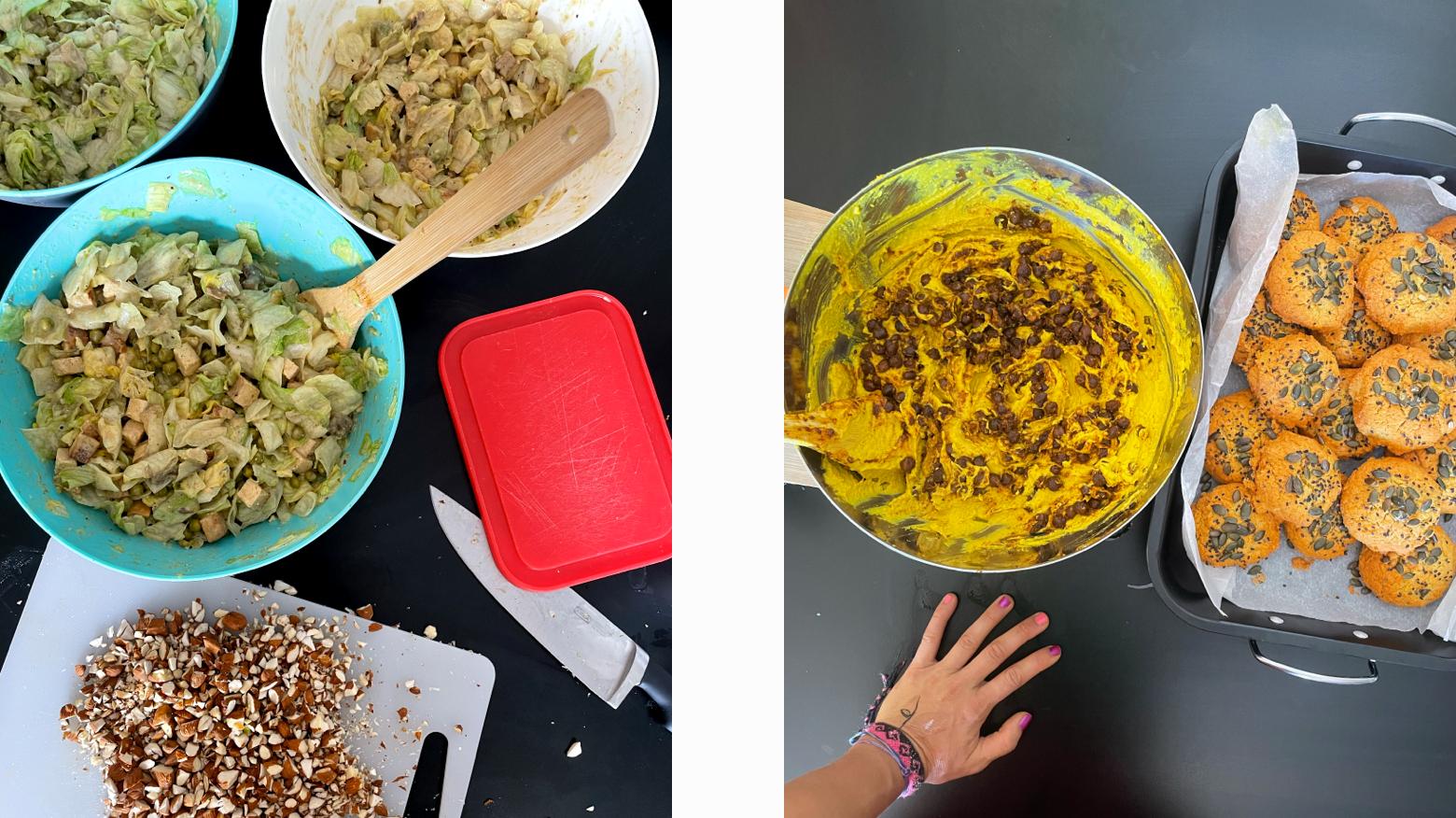
At the company, the topic of veganism was frequently discussed, and one of the myths I helped dispel was the idea that veganism necessarily leads to difficulties with protein intake. Many people still don’t know that all vegetables contain protein. While they may not have the same percentage of protein as meat, if we eat a balanced diet, with fresh vegetables making up the majority of our meals, there is no need to pay extra attention to protein intake. It's important to note that excessive protein consumption can lead to acidity in the body, which can upset the balance of the gut flora. This imbalance can affect our mood, and long-term, excessive meat consumption—especially if the meat is treated with antibiotics and other toxic substances—may cause more harm than a well-balanced vegan diet. For this reason, I developed a separate salad recipe for each menu. I wanted to dispel the common misconception that a salad is just boring green leaves drenched in vinegar. This is how the Green Goddess salad became one of the company’s favorites, which was repeatedly voted for from the menus I put together.
Although I came to the company bi-weekly to cook for the demo days as a vegan chef, the menu always included a meat dish according to the employees' preferences. At first, I prepared this dish, but over time, through our conversations, a spontaneous division of labor developed: for example, Anikó took over the task of slicing the chicken breast. This shared activity created a kind of communal experience, which we could even call team-building, because through sharing our personal experiences and views during conversations, a dynamic formed where, through mutual adaptation, I agreed to prepare meat dishes while others, in turn, took over the task of preparing the meat for me.
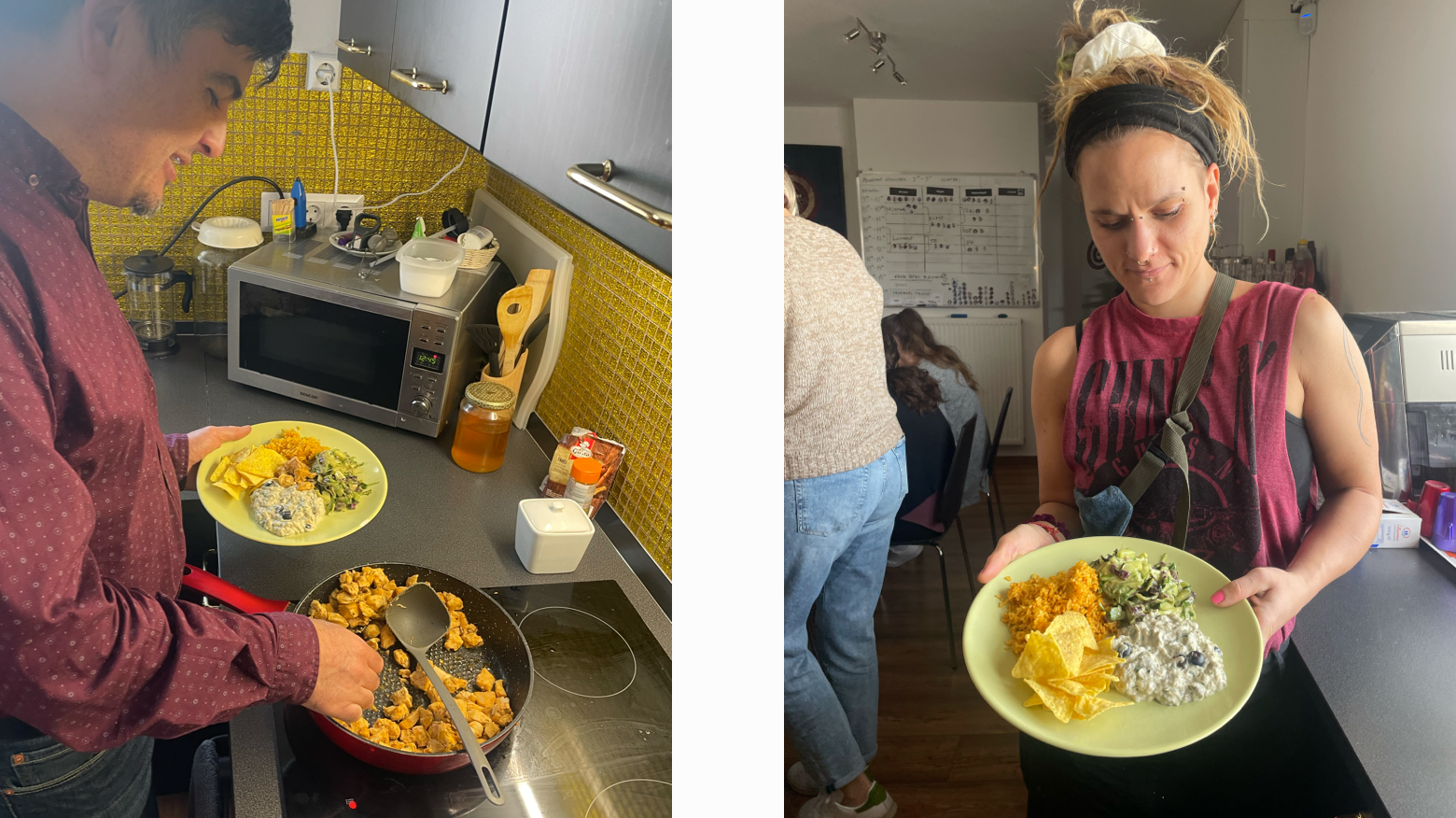
Since August, I haven’t been going to the company to cook. Since then, I’ve been traveling solo through India and Nepal. Solo travel has its advantages and disadvantages. For me, the biggest challenge is when the feeling of loneliness strikes after prolonged solitude. At these times, I no longer experience the calming state of introversion, but rather a sense of disconnection and isolation. Current literature no longer interprets introversion and extroversion as a binary, mutually exclusive personality traits, but rather as parts of a spectrum, where the concept of ambiversion also comes into play. The essence of ambiversion is that it’s situational when we feel more introverted or extroverted. During my travels, my current physical and mental state, as well as environmental factors (set-setting), significantly determine whether I recharge in an introverted or extroverted state. Sometimes, after a long journey, I need solitude and introspection, while when I’m rested, I tend to be more open to my surroundings. The feeling of loneliness during my travels is somewhat alleviated by the fact that meals here are generally social events. I don’t necessarily need to communicate with those around me to ease my loneliness, because simply sitting in a local eatery, eating with my hands according to the local cultural norms, somehow brings me closer to myself and to others through the sharpening of all my senses.
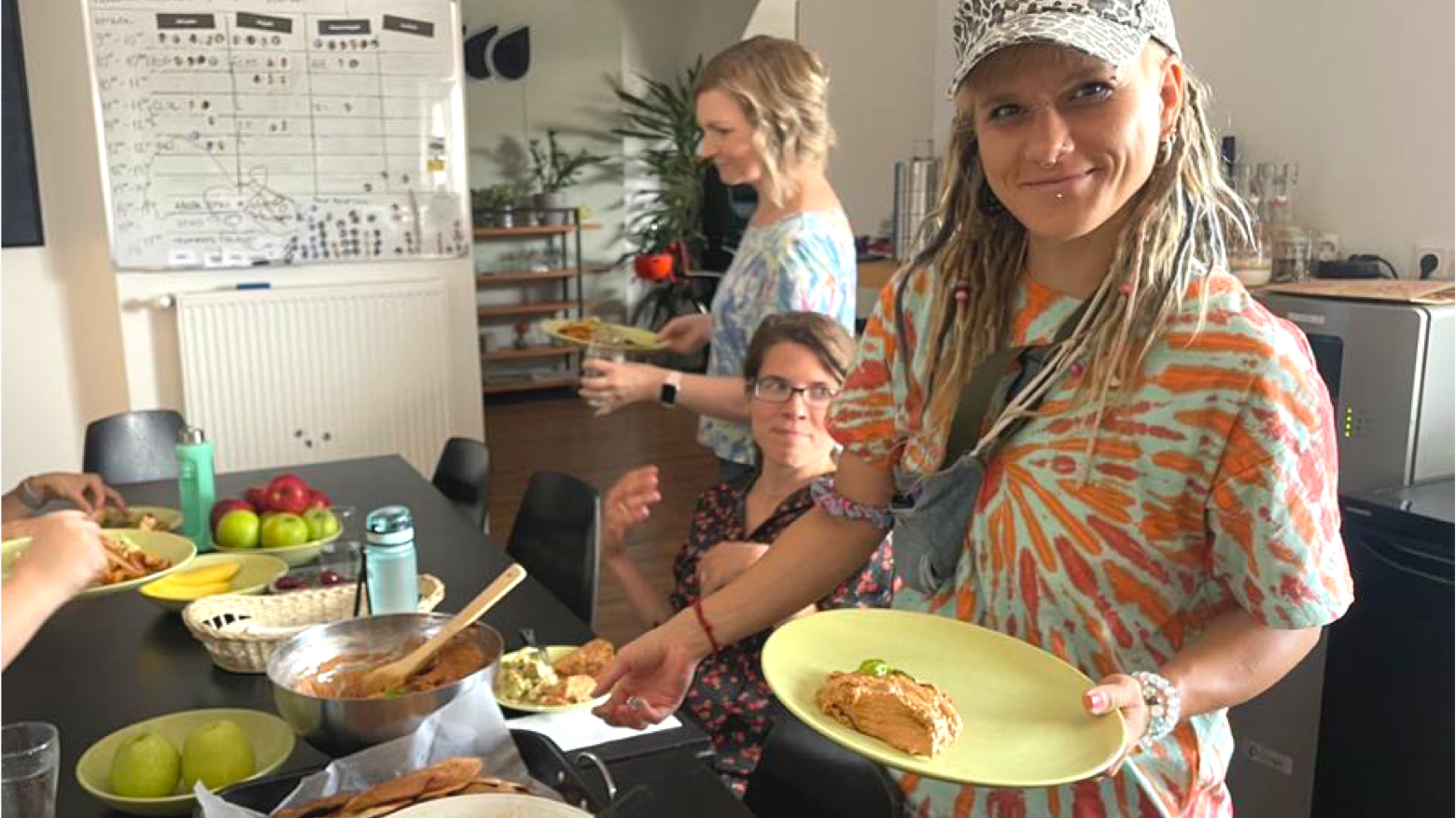
My childhood was also shaped by moments, especially when we were together with female relatives, where meals became a shared experience. From the preparation phase to eating with our hands from one bowl, we were together in a way that everyone could be present in their current emotional state. For example, sometimes these meals were accompanied by intense conversations, but at other times, we ate together in silence, embraced by the calming atmosphere. I wasn’t conditioned to eat in tense silence in the name of "civilization" or to engage in forced, strained conversations like "how was school?" These experiences, along with early exposure to a vegan lifestyle, have significantly influenced how I view meals today: not just as nourishment but as part of an ethical lifestyle, and an important aspect of community connection and self-awareness.
As I write this blog post in the garden of a Nepali convent – not long after I hand-washed my metal plate at the garden tap – I believe that one doesn’t have to travel all the way to Nepal to experience the intuitive cooking and eating experience. The essence of intuitive cooking is precisely to free ourselves from conventional cooking and eating rules that have been encoded into us under the guise of "proper behavior." By breaking and rethinking these norms, we can come closer to our senses, our instincts – and through them, to ourselves, to others, and to the elements of nature.
Share with your friends!